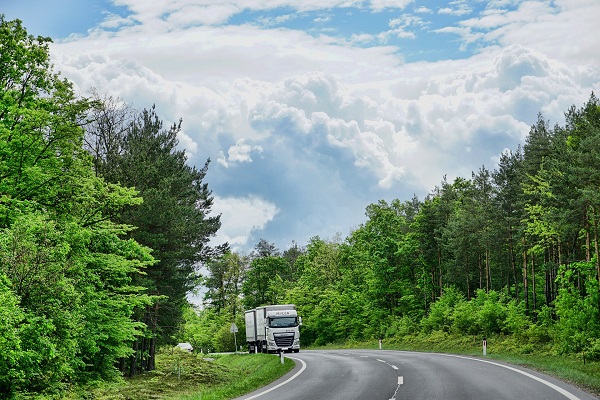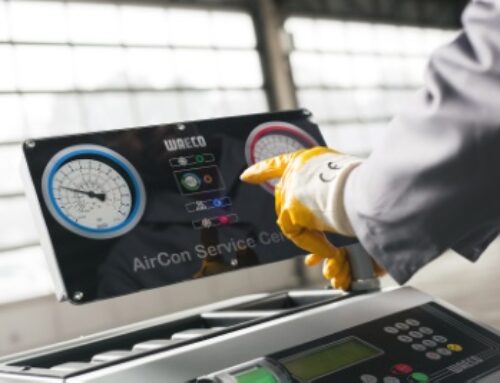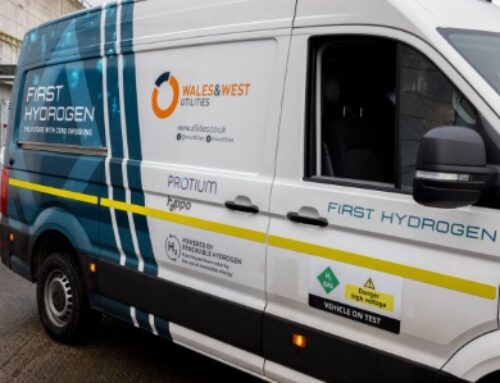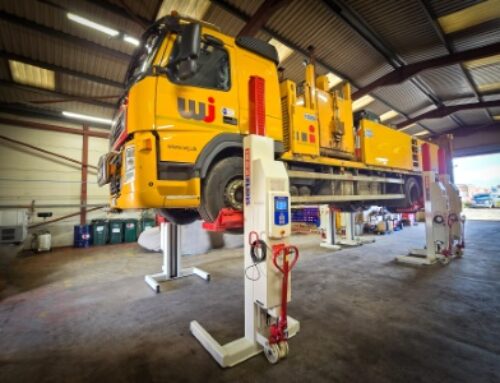Can telematics turn transport green?
 Derek Bryan, VP EMEA at Verizon Connect, identifies ways fleets can reduce their carbon footprint
Derek Bryan, VP EMEA at Verizon Connect, identifies ways fleets can reduce their carbon footprint
The race to net zero is on. Companies around the world are being held more accountable for their carbon footprint, and are exploring more opportunities to reduce their impact on the planet in order to meet increasingly ‘green’ expectations and demands from society, governments, and shareholders alike.
The transport industry accounts for almost one-fifth of global CO2 emissions, which is why many companies are looking for ways to reduce their fleet’s impact on operational carbon footprints.
To mitigate their impact, many organisations are looking at complete overhauls of their fleet operations, which are invariably time-consuming and expensive. Telematics can provide a simpler – and more affordable – solution that can play a significant role in sharpening and refining a company’s sustainability and environmental approach.
Reducing fuel consumption
Telematics can play a critical role in perhaps the most straightforward way to quickly and effectively shrink an organisation’s carbon footprint – reducing fuel consumption. Not only that, slashing fuel consumption will also positively impact an organisation’s bottom line – it’s a win-win.
Automated telematics tools track and monitor employee activity while operating a vehicle, collecting insights and making intelligent recommendations on how workers can modify their driving behaviour to improve fuel efficiency.
These include reducing excessive speeding to minimise accidents, or monitoring vehicle performance so that maintenance can be scheduled at the optimum time.
 By having full control over fleet data, US-based United Subcontractors Inc. (USI) has succeeded in reducing fuel costs by approximately 10 per cent, saving them thousands of dollars. Using telematics, USI’s Director of Facilities and Fleet Operations, Jim Liverseed, knows exactly how many miles each vehicle is carrying.
By having full control over fleet data, US-based United Subcontractors Inc. (USI) has succeeded in reducing fuel costs by approximately 10 per cent, saving them thousands of dollars. Using telematics, USI’s Director of Facilities and Fleet Operations, Jim Liverseed, knows exactly how many miles each vehicle is carrying.
“If a vehicle has low miles, I can take that from one branch and reallocate it to another branch,” he said. “Something as simple as accurate odometer readings every day on a fleet of nearly 1,000 vehicles saves a company like USI thousands of dollars.”
Optimising routes
Due to the fact that fleets typically travel in ‘fixed’ patterns, there exists huge potential to optimise driving routes to further reduce a company’s CO2 emissions. Telematics help fleets calculate the fastest and most direct routes, based on traffic patterns and other available information.
What’s more, because managers and supervisors possess oversight of all their vehicles’ locations and routes at their fingertips, if new transport requests crop up, they can quickly dispatch or re-direct available vehicles along the most optimised route – cutting down on mileage and reducing unnecessary wear and tear on vehicles.
Since investing in telematics, US-based tree service provider Tree Tech has saved approximately $2,000 a month in fuel via a combination of speed monitoring, reducing idling time, and optimising routes. “The solution shows us where traffic is heavy in the morning, so we can avoid certain routes that look really bogged down,” said Tree Tech president Andy Felix.
Reducing idle time
Unnecessary idling is an often overlooked contributor to an organisation’s carbon footprint when it comes to their fleet. All those minutes spent warming up a vehicle, stuck in gridlocks, or taking a lay-by lunchbreak with the engine on – they all add up. In fact, research shows that a half a gallon of fuel is wasted for every hour a vehicle spends ‘idling’.
Telematics allow fleet managers and supervisors to establish alerts for idling that exceeds preset time thresholds. By minimising idling among fleet vehicles, companies are not only reducing their environmental impact and reducing fuel costs, they’re also boosting efficiency within their workforce and, in some countries, avoiding unnecessary penalties from engine idling laws.
Importantly, organisations should carefully choose their telematics.
Best-in-class solutions often share a common set of standards and functionalities, such as the ability to view data and maps from any device, at any time, and in any location; map updates in near-real-time, reflecting the current status of vehicles, routes, workers, and equipment; analytics dashboards, for example, for up-to-the-minute fuel information; and constantly updated coaching and training modules.
Above all, companies must realise that successful adoption of any new technology can’t happen in isolation. To drive through concerted and long-term change to the environmental culture of a company’s operations, it’s paramount to get everyone – from technicians to drivers, and office employees to senior execs – on-board from the very beginning.
By holding everyone accountable to the same set of transparent and accessible standards, organisations can foster a culture of trust among their employees, generating more positive, long-term results.












